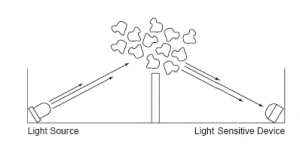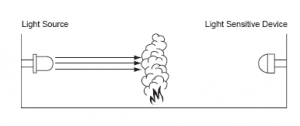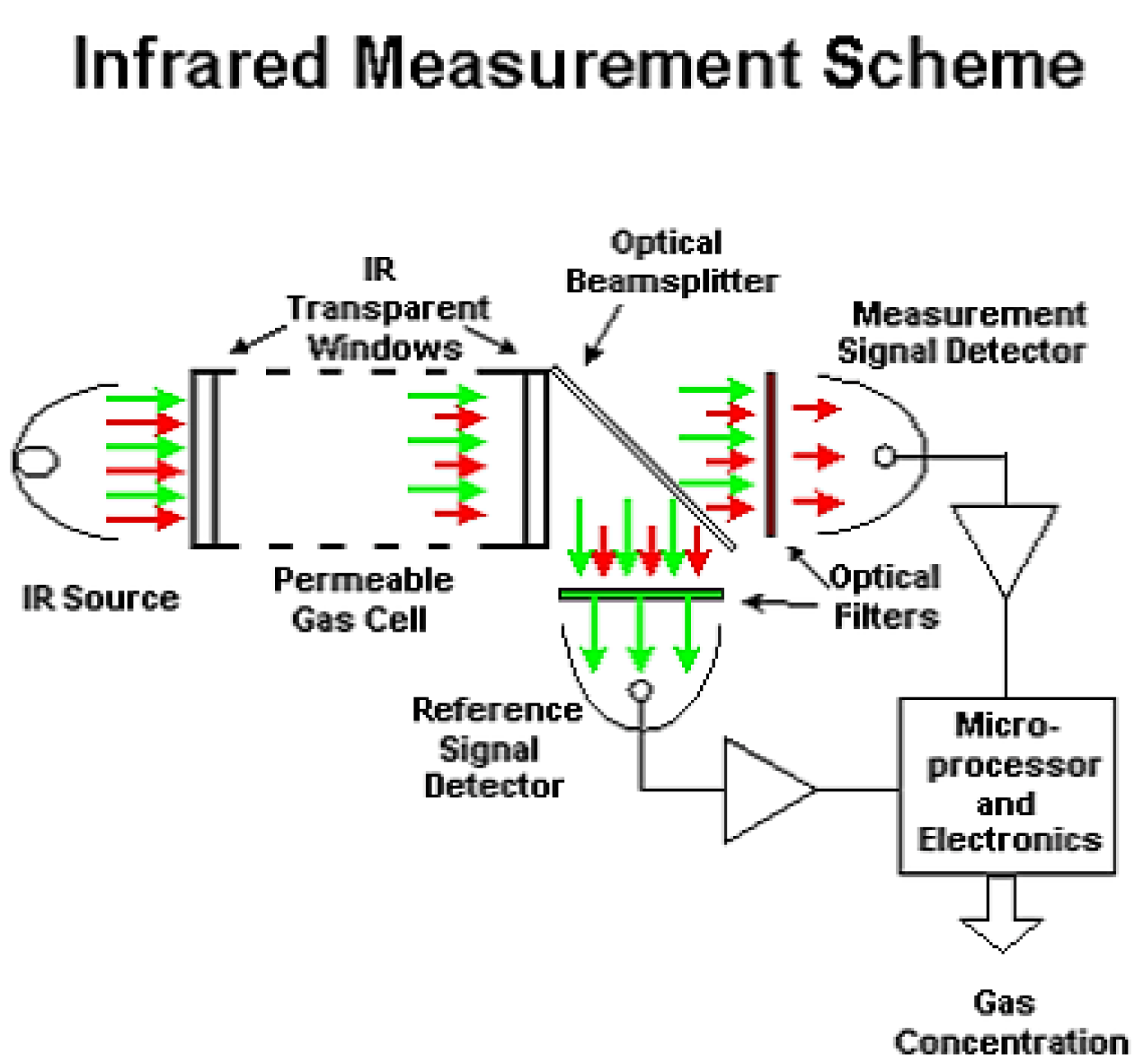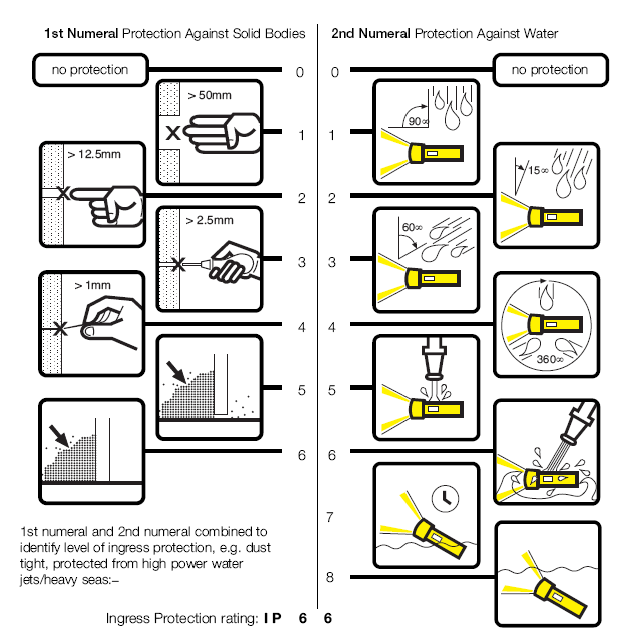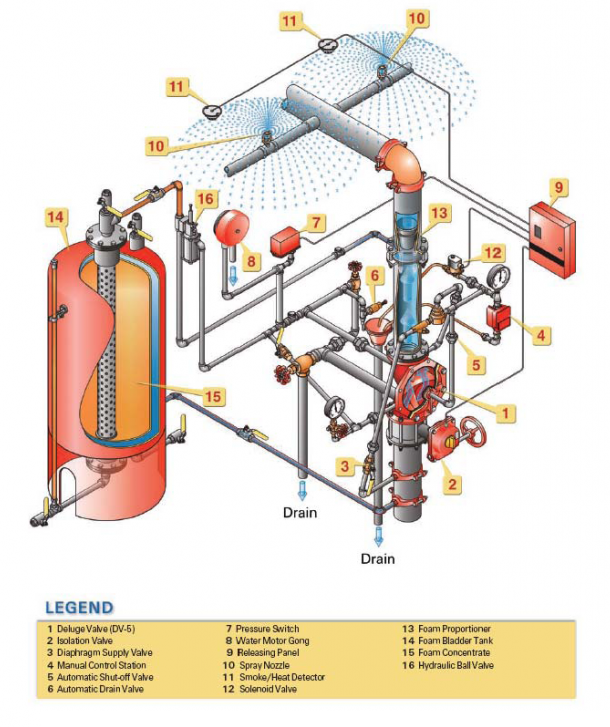Photoelectric smoke detectors typically operate based either on the light scattering principle (light can be scattered due to the smoke particles reflection) or the light obscuration principle (reduction of light passing through smoke particles).
How photoelectric smoke detectors work based on light scattering
Photoelectric light scattering smoke detectors typically consist of one light source, typically a light emitting diode (LED) and one light sensitive device, typically a photodiode. When smoke particles enter the light path, light collides with these particles and is reflected at the photo-sensitive device, causing the detector to respond.
Picture 1 - Light scattering smoke detector
How photoelectric smoke detectors work based on light obstruction
Photoelectric light obscuration smoke detectors also employ a light source and a light sensitive device. When smoke particles block the light beam, the light sensitive device identifies the reduction in light and its output is modified. The change in output is sensed by the detector's circuitry and when the pre-set threshold is passed, the detector produces an alarm.
Picture 2 - Light obscuration smoke detector
In contrast to ionisation smoke detectors, photoelectric smoke detectors are more suitable for detecting slow developing (smouldering) fires which are typically characterised by smoke particles in the 0.4 to 10 microns size. On the other hand, ionisation smoke detectors are better suited for fast developing (flaming) fires, with a typical smoke particle size below 0.4 microns. Of course, both types of detectors can detect both types of fire, but their response (reaction) time will vary, depending on the actual type of fire.
Since fires usually develop in unpredictable ways, neither type of detectos is alwasy best and consequently, it is strongly recommended to use both types of smoke detectors. However, it is to stressed that in certain circumstances, standard smoke detectors may be unsuitable. In such cases, special-type of detectors, like flame detectors or heat detectors can be used.
